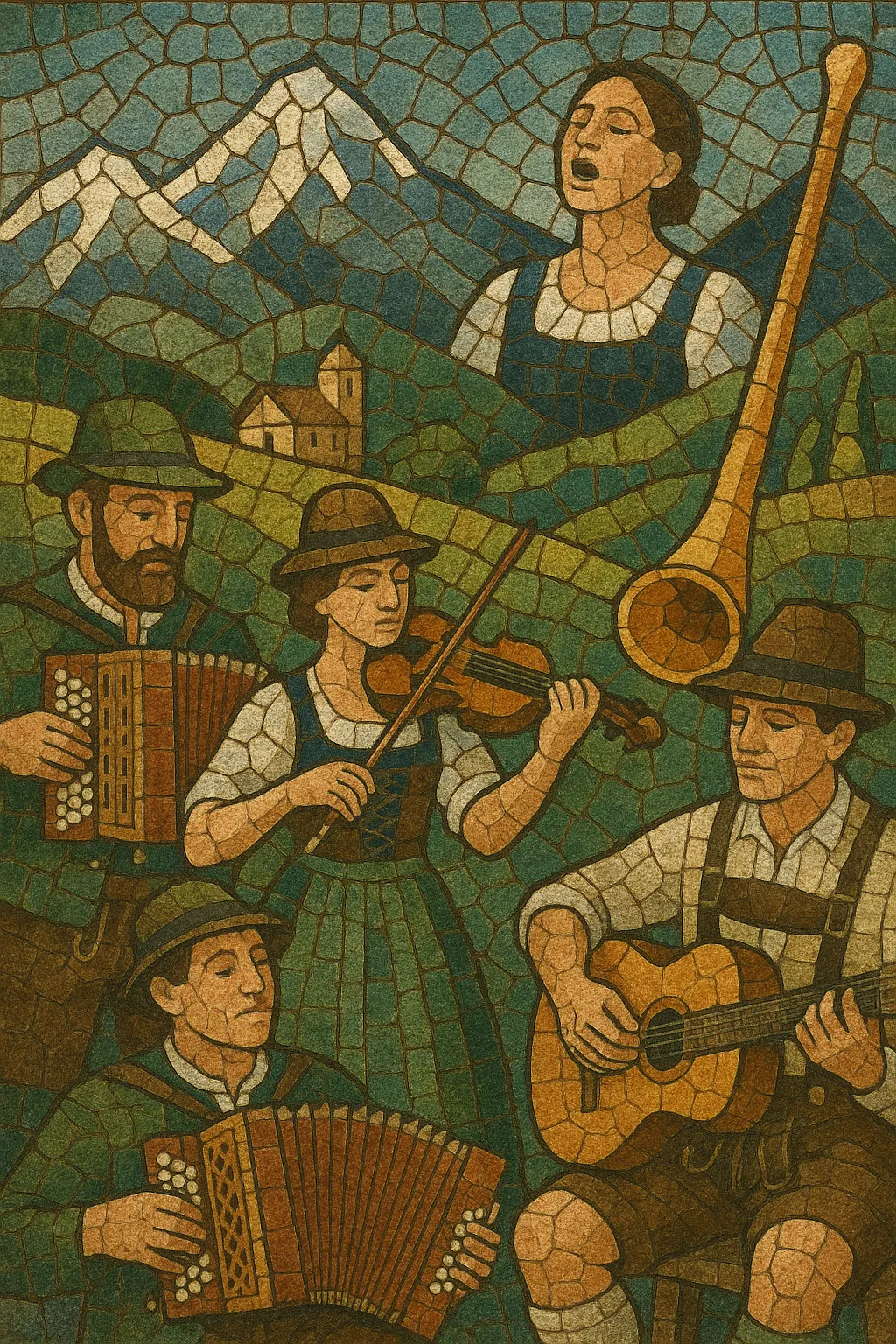Alpine folk music is the traditional rural music of the Alpine region spanning Austria, Switzerland, southern Germany (Bavaria and Swabia), South Tyrol in northern Italy, and parts of Slovenia. It centers on small ensembles (Tanzlmusik) playing dance tunes and strophic songs for village festivities, weddings, and seasonal rituals.
Characteristic elements include yodeling (Jodler), lively dance forms such as Ländler (often in 3/4), Polka (2/4), Boarischer, and Zwiefacher (with alternating meters), and distinctive timbres from diatonic button accordion (Steirische Harmonika), zither, hammered dulcimer (Hackbrett), fiddle, clarinet, guitar, and alphorn. Melodies are typically modal or major with triadic outlines, drones, and parallel thirds, while lyrics use local dialects and celebrate landscape, pastoral work, and communal life.
The style is closely tied to regional dress (Tracht) and dance customs (e.g., Schuhplattler), and it remains a living tradition that bridges intimate domestic music-making with public festivals and modern stage performance.
Alpine folk music grew from rural singing, herding calls, and dance traditions in the high valleys of the Alps. Seasonal transhumance and village social life fostered call-and-response singing and early yodel techniques, while simple dance tunes supported community gatherings.
By the late 1700s and throughout the 1800s, dance forms like the Ländler and waltz crystallized, and small string and wind ensembles became standard. The spread of the diatonic button accordion, zither, and hammered dulcimer shaped the idiomatic sound. Romantic nationalism and the folk-collecting movement documented local repertoires, fixing melodies and verse forms into songbooks and teaching traditions.
Radio and records popularized distinct regional flavors—Appenzeller Streichmusik in Switzerland, Tyrolean and Bavarian Tanzlmusik, and South Tyrolean vocal groups. Yodel choirs and village music societies maintained intergenerational transmission, while postwar tourism created new stages for performance.
A new wave of performers preserved archival repertoire while experimenting with jazz, rock, and contemporary folk, creating "Alpine crossover" and "Alpine rock." Festivals and competitions sustain the tradition, and local dialect lyrics and acoustic instrumentation remain core identifiers even in modernized settings.


